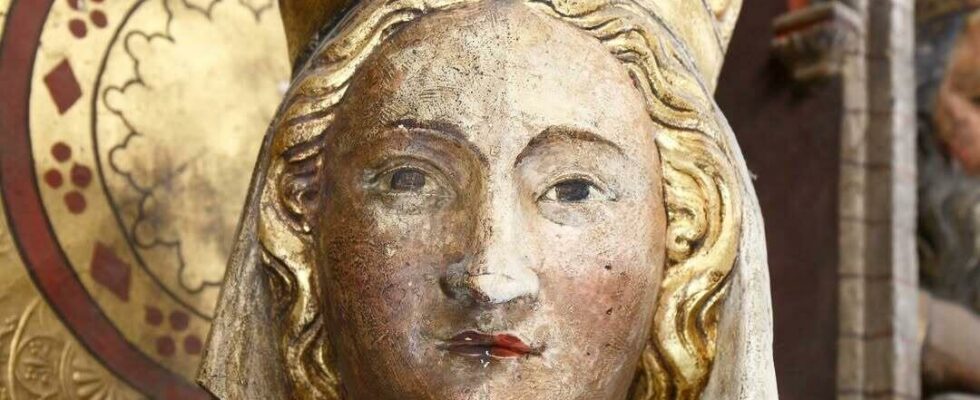100% creation invites you, five years after the fire at Notre-Dame de Paris, to meet the companions, craftsmen or designers who worked on this emblematic construction site. Today, Marie Parant-Andaloro tells us about her job: mural painting restorer. On the Notre-Dame construction site, she is the representative of a group of fifteen restorers in charge of the restoration of the mural paintings of three chapels.
“ In my professional career, this is an extraordinary project from every point of view. It took me two and a half years almost full time », explains Marie Parant-Andaloro, restorer of mural paintings. “ A lot of investment, especially with a lot of chapels to do and a large team to manage. I was very happy for two and a half years, it was a great pleasure », adds Marie Parant-Andaloro.
The mural painting restorer is a seasoned expert in the field of heritage conservation. Originally from Toulouse, she studied Fine Arts before specializing in restoration. She began her career in easel painting before moving into the restoration of mural paintings. For over 20 years, Marie Parant-Andaloro has worked mainly in churches and other historic sites. His atypical career mixes art and technique.
For the restoration of the mural paintings of Notre-Dame de Paris, Marie Parant-Andaloro and her team participated in the test site. “ We were on site for six months and we tested all the protocols developed by the historical monuments research laboratory. We tested co-activity, that is to say we worked at the same time as the facing restorers, the sculpture restorers and the stained glass restorers. We had to know if co-activity was possible, know the impact of the lead protocol on our working time and following these test groups, the public establishment developed the calls for tenders with a very precise timing. The entire calendar was done in advance and precisely on this calendar, we saw the co-activity that we could do or not. »
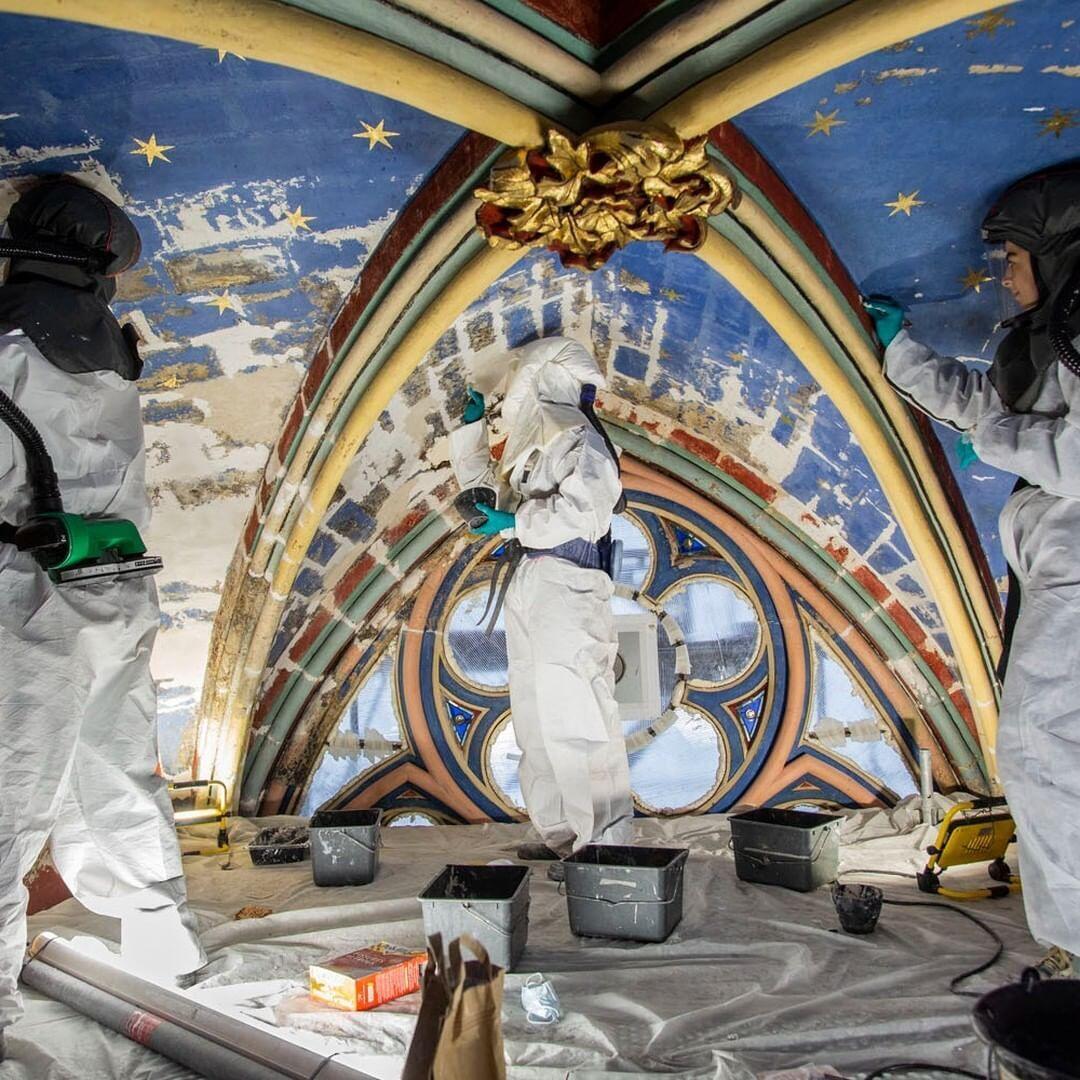
“ Following these test chapels, the public establishment developed a call for tenders. My group responded to the call for tenders and out of three lots, we got two. I mobilized fourteen mural restorers and a gilder to be able to meet the planning challenge. There were fourteen of us for one year and six or seven of us the next year. At the height of the work, I would say between 20 and 25. There were many of us because we had two batches, so we were doing three chapels in parallel. It’s about four per chapel, between twelve and fifteen. Afterwards, it depended a little on the schedules of each of my colleagues, since there are people who have other projects, who have other things to do in the workshop. It depended a little on everyone’s schedule. »
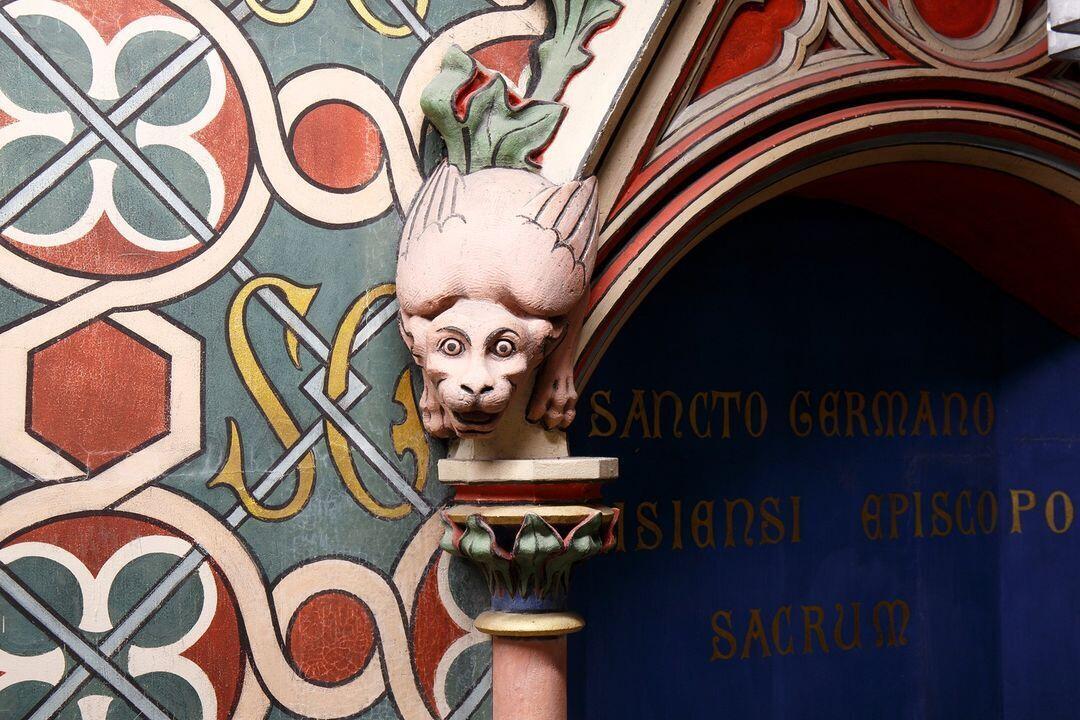
The challenges were numerous and the need to continually question oneself to maintain the quality of the work was important for Marie Parant-Andaloro to bring forgotten murals back to life. The biggest challenge, respecting the consistency of the restorations. “ For the mural painting, we work on scaffolding. On site, we were very spoiled because we had scaffolding with stairs on all floors, except a trapdoor to go to the vault, but that’s normal. We had water on all floors, which was a big plus because fetching water was much easier, we didn’t have to go up and down the buckets, fetch the water… Same for electricity, one floor out of two. There was much less arduousness compared to other projects. »
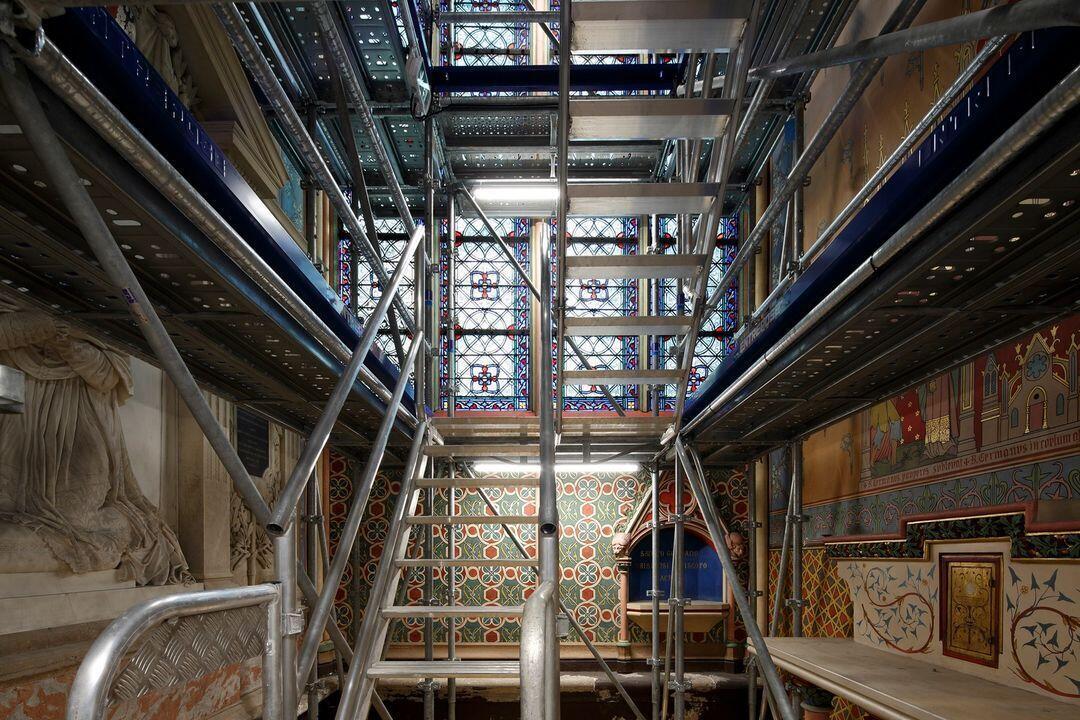
“The challenge, really, was time, meeting deadlines. As I had a very close-knit team at times, if really, I felt that we were a little late and not enough on the site, I called on my colleagues who were extremely responsive. We must never forget that it is a wall and that the result must be the same, whether we are at the bottom, in the middle or at the top of the wall. This is the most important challenge for wall painting. Never forget the building, never forget, for example for Notre-Dame, that if there is a painted wall from where we work, opposite, there is a vault which is also painted. We must never forget the whole. »
Each restoration project presents challenges and also brings joy. “ The first, a very nice surprise, is the homogeneity of the whole, that is to say whatever the batches, the result is exactly the same. That was the initial challenge, because when there are three lots and different companies, there has to be the same hand, the same result, the same result. This was possible thanks to the protocol established upstream. Everyone used the same protocol. The architect was there to supervise. Even us, among ourselves, we went to see what the others were doing. The others came to see a little bit of what we were doing. Sometimes, when we had worries, we shared them. »
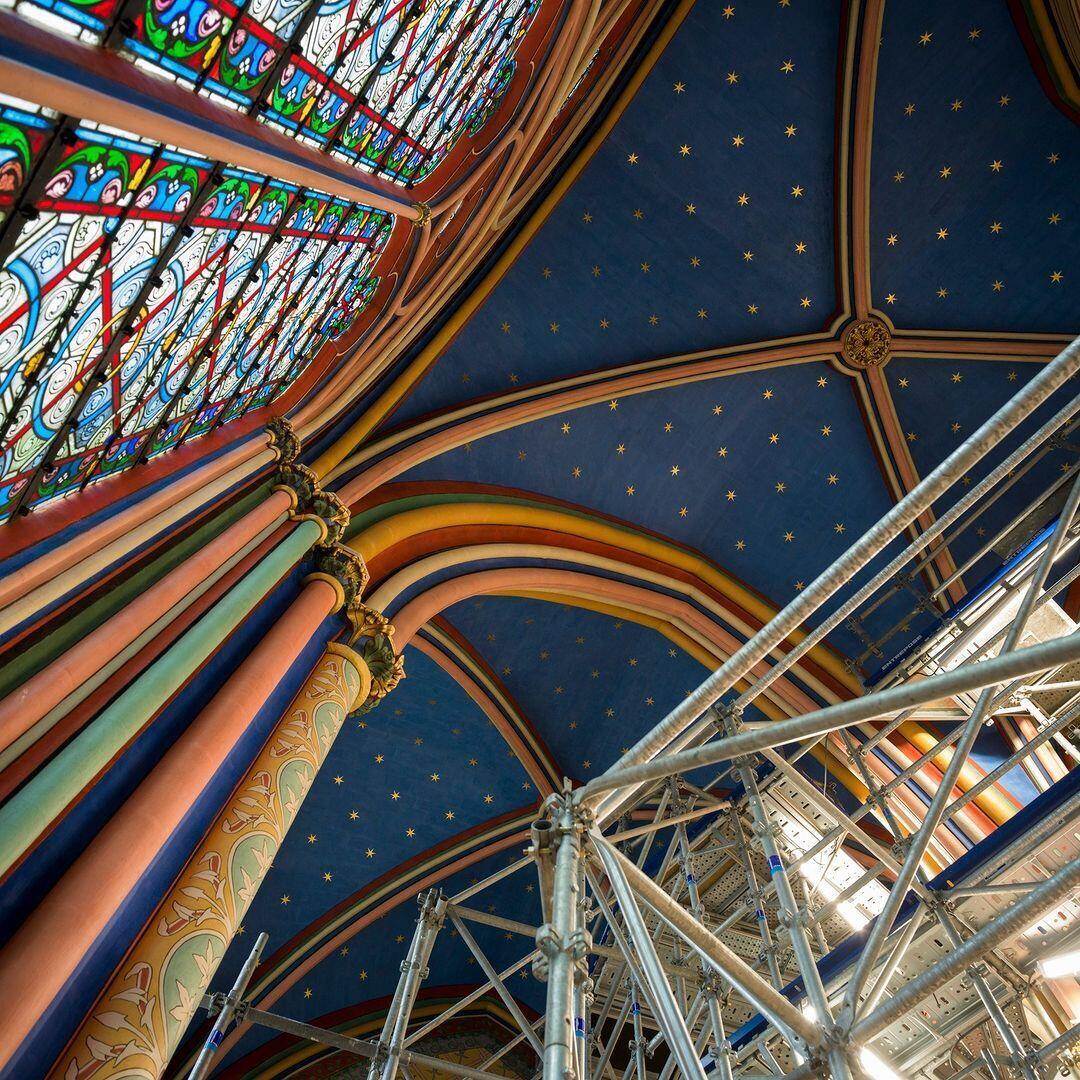
“And then, the contrast between the wall paintings of all the chapels in the ambulatory and the color of the stone. So that was a revelation. There is a color relationship between the color of the stone and the colors in the chapel. When I talk about my work, I really say we are at the time of Viollet-le-Duc, at least for the ambulatory and for the mural paintings. Then for the frames, obviously, it’s from the Middle Ages, but really, the ambulatory and the mural, for me, it’s really the Viollet-le-Duc moment.”
During the restoration of Notre-Dame de Paris Cathedral, Marie Parant-Andaloro forged links with other artisans. For the restorer, human relations were very important on this site. “ The big plus of this project, honestly, was working together and therefore meeting the other craftsmen. Because generally, when we do a mural painting project, we arrive, the electricity and water are installed, the scaffolding is erected. But there, on a daily basis, we worked with scaffolders, with plumbers, with electricians, with those who took care of the water. Because, if the scaffolding prevented us from accessing a somewhat small space, for example, we called the scaffolders, they would come and change the scaffolding for us. If the water supplies were full, we called those who took care of the fluids. They came to change our water. Same for the electrician. These are people we encountered on a daily basis. The stained glass restorers, the sculpture restorers, those who took care of the facings because we met them on a daily basis, so, on a human level, it was just wonderful encounters. »
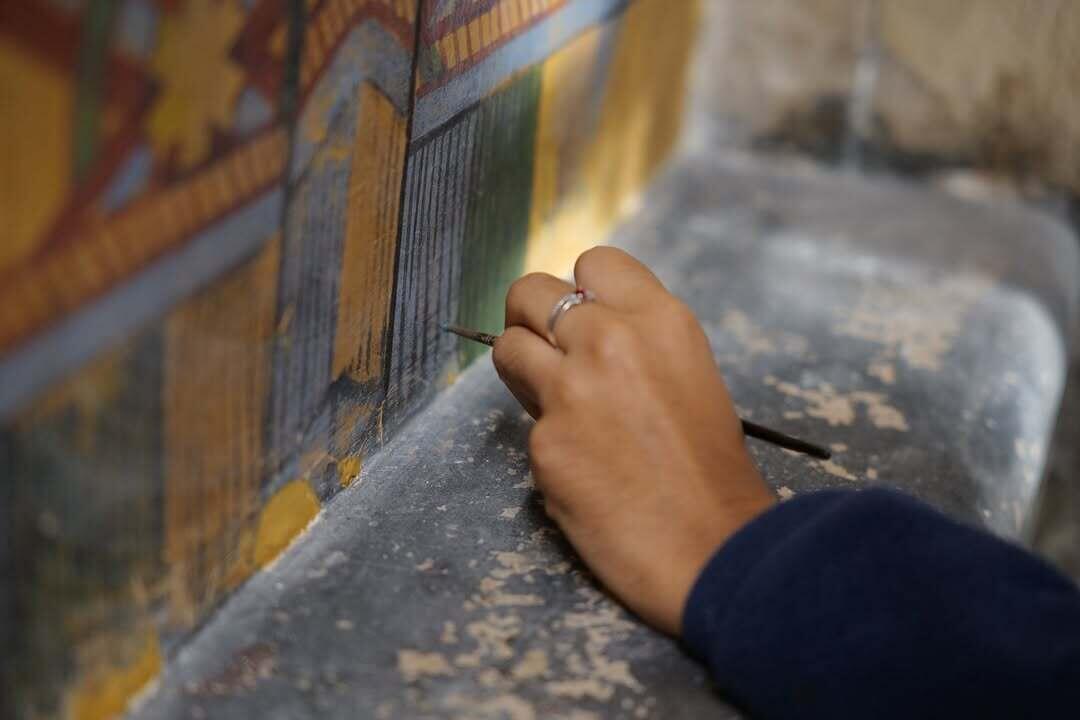
Now Marie Parant-Andaloro enthusiastically awaits the idea of returning to Notre Dame as a simple visitor
“ I have been working for Notre-Dame de Paris for more than 20 years, that is to say before the fire, I was restoring paintings, I carried out interventions in the church. I was very connected to Notre-Dame. I knew all the people who worked at Notre-Dame, the Lady of the Treasure, the concierge, all the people who took care of the liturgy because just before the fire, we had restored a chapel, the Saint-Germain chapel. We were eating with the public, with the liturgies. At 8 a.m. there was mass in the morning, so you didn’t have to arrive before 8:30. At 12 p.m., there was mass, so we had to stop for mass, so I really have a very special relationship with Notre-Dame. There is this side, the human side, of course there is the emotional side, but still, we are there as professionals, we are there to work. Now, I am very impatient to return to Notre-Dame as a spectator, a visitor. I have had this emotional side for over 20 years and I think it has broadened. When I go to mass for the companions, it will be quite impressive for me. »
Find all the episodes of 100% Création on:
Apple Podcast Castbox Deezer Google Podcast Addict Podcast Spotifyor any other platform via the RSS feed.
